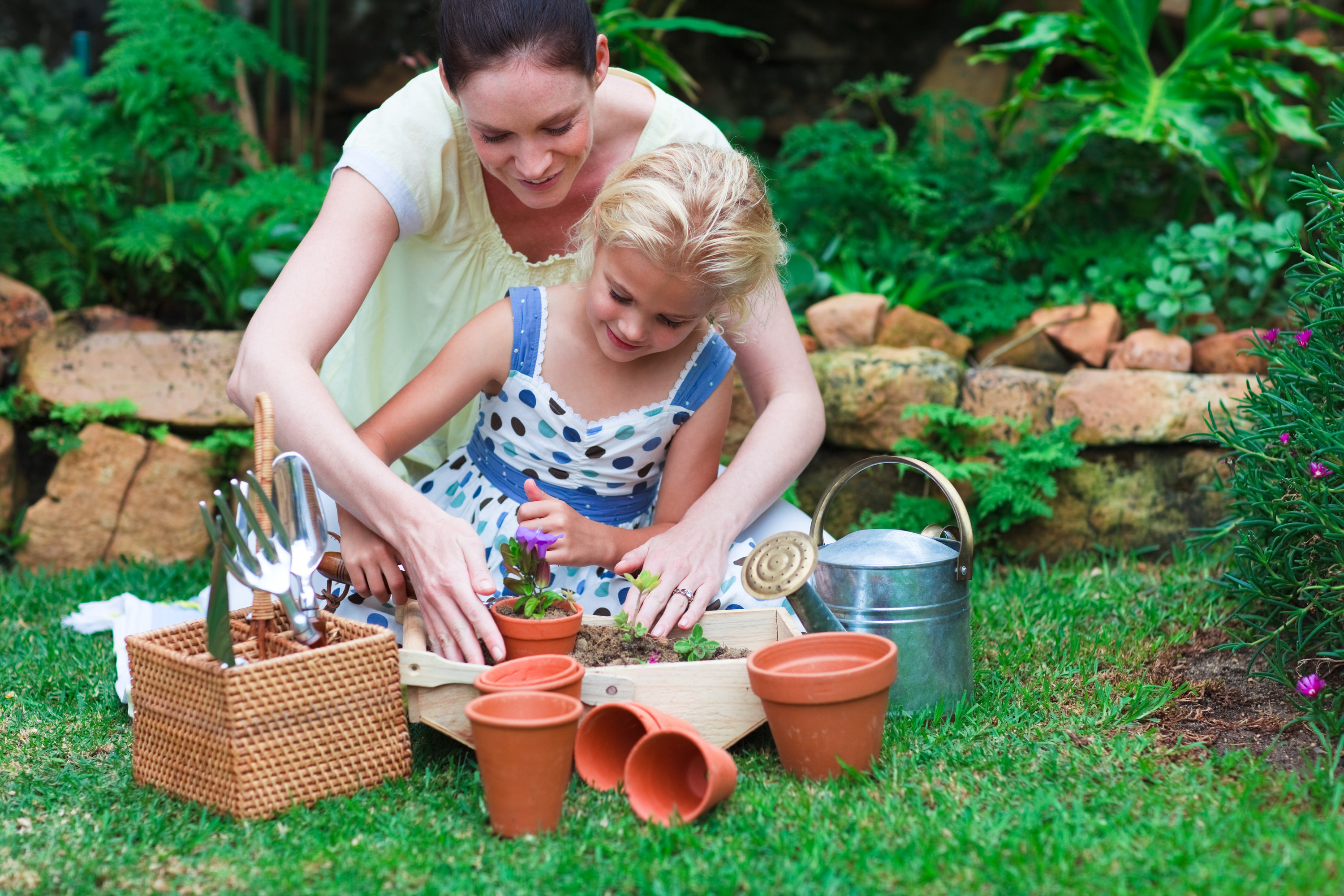UPCYCLING OLD TOYS
Yesterday's playthings become today's decor
For trusted expertise and superior results,
find a landscape professional near you.

Let's face it, kids love playing in the dirt. So why not embrace it? Next time your kids are looking for something fun and educational to do this summer, organize some outdoor activities and watch those bored summer faces erupt into enthusiastic smiles.
3 Things We Can Learn from Leaves
Conduct a Scavenger Hunt for Leaves
Before the hunt begins, scout and list all of the different types of leaves your child might find in a specific area – look for leaves with five points, rounded features, or notched elements. Then ask younger kids to collect at least five different-looking leaves.
At the end of the hunt, compare the differences in leaf colors, shapes, and textures and explain how they might help that particular plant survive and fit into that environment. For instance, a thick, succulent leaf helps the plant conserve water, a hairy leaf may protect it from insect predators, and a long “drip tip” at the end of a leaf helps rainwater drain away in rainforest areas to help prevent disease.
Helpful tip: As kids collect leaves, just beware of any poisonous or prickly leaves lurking in your area and make those off-limits. Fun is the goal, and the following plants are sure to ruin the party: poison ivy, poison oak, poison sumac, stinging nettle, and wild parsnip.
Explore the Myriad Uses of Plants
See how many useful things your kids can list that we can get, make and do with plants. For starters: paper, textiles, floor coverings, inks and dyes, food, tea and coffee. You may be surprised at the length of the list they create! This is another concrete lesson on the importance of plants in our everyday lives.
Next comes the fun part – bringing the lesson to life with hands-on projects! Head out into the field, woods, or garden and collect local plants you can use to make useful items, unique gifts, and yummy treats. Here is an idea to get you started:
Make Original Leaf Print Art
Kids can use leaves to make some beautiful artwork. All you need are some basic craft supplies and leaves:
How to:
These leaf print projects make excellent framed art, bookmarks, and gift tags and bags, and are a great way to teach kids to appreciate the beauty plants bring into our lives – even long after the leaves are gone. For a bigger challenge: try printing on T-shirts or tote bags to create one-of-a-kind statement pieces or wearable art.
Give Them a Garden of Their Own
Help your child learn about the life cycle of plants by giving them their own little plot of soil. If you have enough space this could be a spot in your garden or landscape. Or it could just be a large container with enough dirt and room to grow the desired plants.
Keep them involved in every step along the way, starting with choosing the plants they want to grow and do a little research first to pick the types of seeds that will do best in your growing conditions. If you aren’t sure what plants might be right, visit your local retail garden center and ask an expert. Depending on the child's age, the amount of guidance and supervision from you will vary. Younger children may be perfectly happy just to dig in the dirt and make mud. That's OK – the important thing is that they learn to enjoy interacting with the soil and being in the garden. Older children, however, will learn patience by waiting for the seeds to sprout.
Older kids can also learn some responsibility by caring for their garden plot on their own. Once the seeds are planted, and after instructing them how to water and weed, stand back and let them be in charge. Only get involved if asked and only to make suggestions. However, sometimes kids lose interest if they feel overwhelmed by responsibility. It can help to designate a few minutes of special "family gardening time" every day, which will also help you to keep up with the weeding and deadheading!
It may help them at the beginning of this project to make a chart or mark the calendar with daily reminders and tasks to do. They'll learn some valuable lessons about caring for plants and how plants rely on us to create and maintain an environment that encourages them to grow and flourish.
When flowers start appearing, you can also teach kids about the importance of pollinators in the garden. Kids get so excited when butterflies are flitting about them – especially when one lands on them! This is a great time to teach kids that butterflies and other insects are very important workers in the garden because without them we can't grow most of our food. By protecting pollinators, we can make a difference in the health of the environment.
To help them succeed, show your kids where to find more information about gardening and tips on growing their seeds in particular. For example, visit your local library for books on gardening. Or take a trip to a local garden center or plant nursery and work with a professional to plan a successful garden project.
Plant-Savvy Kids Understand More About the Environment
When kids are actively involved in gardening they learn important lessons about stewardship, sustainability, and waste. Many parents have also found that when kids make their own choices about what vegetables to grow, they are more likely to eat them.
So, let your kids play in the dirt this summer! Experiencing the many benefits of the plants growing in our gardens and landscape and learning to be good earth stewards may just turn out to be some of their most cherished childhood memories.
We recently updated our Privacy Policy. By continuing to use this website, you acknowledge that our revised Privacy Policy applies.